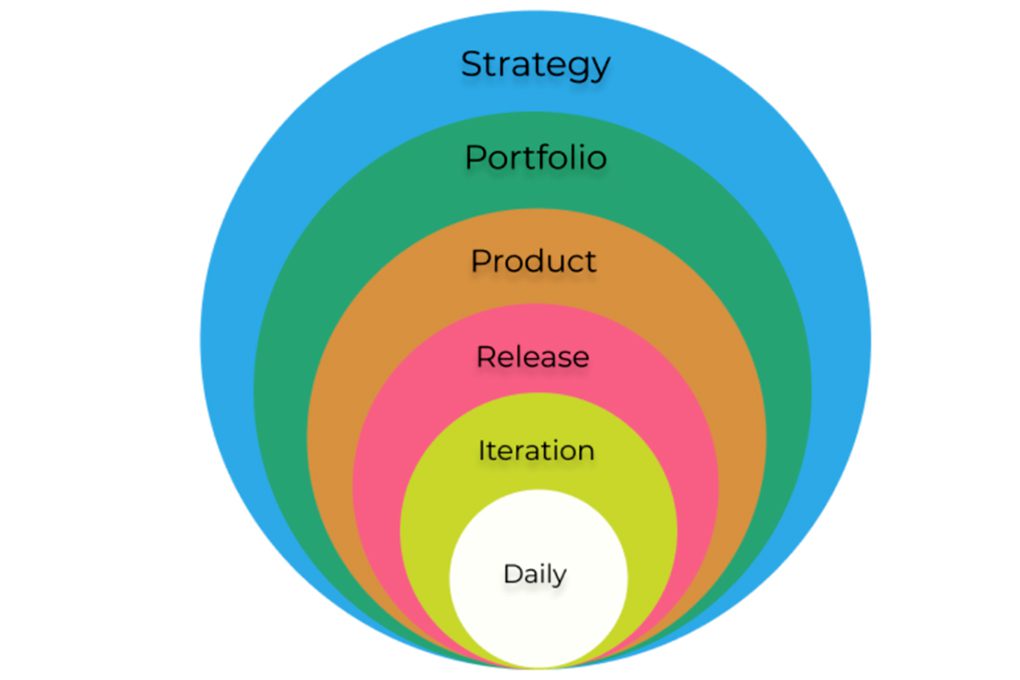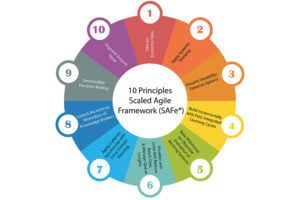
Agile Planning and PI Planning
We all know that one of the four values of the Agile Manifesto states:
“Responding to change over following a plan.”
However, this doesn’t mean that if we work with Agile, we don’t plan at all.
Here’s what is stated:
So, without denying the importance of what’s on the right,
we still value more what’s on the left.
Thus, planning your work is an important and integral part of Agile.
Characteristics of Agile Project Planning
Let’s explore different levels of planning mentioned in the “Agile Planning Onion.”
It’s crucial to understand that Agile planning is applicable at every layer of the “onion.”
We use planning not only at the team level (daily, iteration, release) but also for product management, portfolio management, and Agile strategy management.
In the Scrum framework, Agile planning is iterative. This means that we develop and adjust our plan at the beginning of each sprint. The goal is to invest time in planning at the optimal moment and easily adapt to changes during the execution phase.
However, besides this, there’s top-level planning, preparing a product roadmap at the very beginning, outlining major releases and corresponding features. This is also planning, though at a higher level.
After top-level planning and initial task estimation based on teams’ Velocity information, we can forecast the time required for tasks or the entire project.
Planning in Scaled Agile Environments
In scalable Agile frameworks, planning is more extensive.
Let’s take SAFe as an example, with an event called PI (Program Increment) Planning.
PI Planning is a face-to-face event based on a cadence, a regular event that serves as the “heart” for the Agile Release Train (ART), unifying all teams with a common mission and vision in the ART. PI Planning is crucial for SAFe; it’s considered that if you’re not doing it, you’re not doing SAFe.
“Those who do the work plan the work.”
Offline planning has its advantages, and the unwritten SAFe “rule” is: “Those who do the work plan the work.”
However, when physical presence is impossible for all participants, as seen during COVID-19, technical means for virtual meetings can be utilized. Many teams have successfully created a hybrid situation where several teams join both online and offline.
A Bit More Detail on PI Planning
PI Planning has a standard agenda, including a presentation of business context and vision, followed by group planning where teams create their iteration plans and goals for the upcoming Program Increment (PI). Teams specify when they’ll complete the discussed tasks.
All teams’ members participate in this event within the Innovation and Planning (IP) Iteration.
PI Planning extends for two full days. If participants are in multiple time zones, this time is often extended.
Business Benefits of PI Planning
PI Planning provides numerous benefits for business, including:
- Establishing direct communication among all team members and stakeholders
- Aligning development stages with business goals, context, vision, and team and program goals
- Identifying dependencies and engaging teams in collaboration
- Aligning requirements and team performance, eliminating redundant work
- Facilitating quick decision-making.
Participants
PI Planning is a significant event that requires preparation, coordination, and communication.
Among the participants: business owners, product managers, Agile teams, architects/system engineers, and other stakeholders.
Tag:Agile, Project, Terminology



